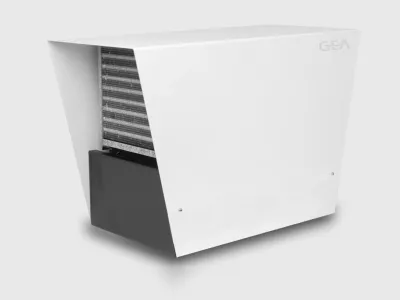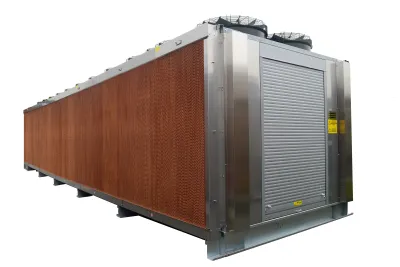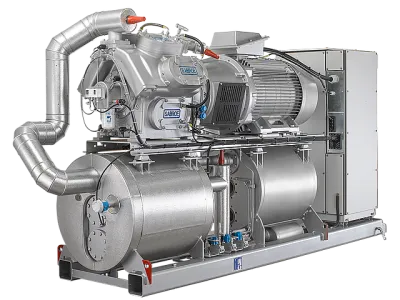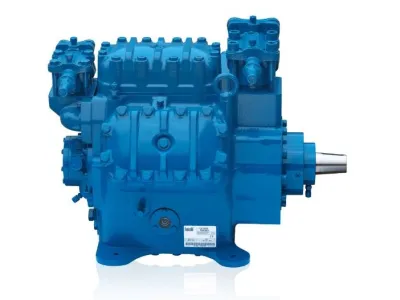Ammonia has a reputation for being dangerous in the conventional refrigeration industry.
Refrigerant
R717 Ammonia as a Refrigerant
History of Ammonia in the Refrigeration Industry
Ammonia (NH₃ or R717) is the refrigerant that was first used in vapor compression machines around 1870. It has thus been used in large-scale refrigeration and industrial systems for more than 100 years.
Key Data
NH₃ has the lowest TEWI (Total Equivalent Warming Impact = direct greenhouse effect of the
Contents
Product Ad
Image

GEA Purger ist ein Entlüftungsgerät, das die Konzentration von Luft und anderen nicht kondensierbaren Gasen reduziert
Jobs
Mounting
Mechanic/Welder (m/f/d) at GEA
We are looking for three mechanics/welders (m/f/d) at our Berlin location.
Image

GEA Refrigeration Germany GmbH
Berlin, Germany
Fulltime
Project management refrigeration technology
Commercial Employee Order Processing in Engineering (m/f/d)
To strengthen our team, we are looking for a commercial employee to handle engineering projects as soon as possible.
Image

MTA Deutschland GmbH
Nettetal, Germany
Fitter refrigeration technology
MTA Refrigeration Technician (m/f/d) in Customer Service for Baden-Württemberg
To strengthen our team for the Stuttgart region, we are looking for you as a Refrigeration Technician (m/f/d) for our customer service.
Image

MTA Deutschland GmbH
Nettetal, Germany
Fulltime
Get in Touch with the Author
If you have any questions or would like additional information, the author of this article is happy to assist you. Simply use the options below to get in touch directly.
Related Products
Image

Low operating costs and extremely low maintenance are the key parameters.
Image

SABROE® - Building Customer Trust for a Better World - SABROE is a registered trademark of Johnson Controls
Image

Im industriellen Prozess werden mit Ammoniak arbeitende Kälteanlagen, insbesondere solche für die Produktion und Lebensmittelverarbeitung, aber auch im Marinebereich, starke und leistungsfähige Kompressoren benötigt.
Related Articles
Refrigerant Overview and Properties
Discover the latest refrigerants for efficient and eco-friendly cooling!
Drop-In Refrigerants - Definition and Application
Using Drop-In Refrigerants as an Environmentally Friendly Alternative
Azeotropic and Zeotropic Refrigerants: Properties and Differences
Learn the key differences between azeotropic and zeotropic refrigerant blends
Refrigerant R513A - Drop-In Alternative for R134a
R513A was developed as a replacement refrigerant for R134a.
MAK Value – Maximum Workplace Concentration
The MAK value determines the safe concentration of substances in workplace air and protects individuals from health risks.
Flammable Refrigerants - ATEX in the Refrigeration Industry
The refrigeration industry is increasingly adopting flammable refrigerants like propane, making compliance with ATEX directives for safety and explosion protection essential.
Propane (R290) as a Refrigerant - Safety Regulations and Requirements
R290 is an environmentally friendly but flammable refrigerant. Its use therefore requires special safety measures and compliance with legal regulations.
DIN EN 378 – Guidelines for Refrigeration Systems and Heat Pumps
The EU standard governs the safety, operation, and environmental impact of refrigeration systems and heat pumps.
The F-Gas Regulation in the EU 2024 and R32
The EU's F-Gas Regulation 2024 does not impose any restrictions on the continued operation of air conditioning systems and heat pumps using R32 refrigerant.

